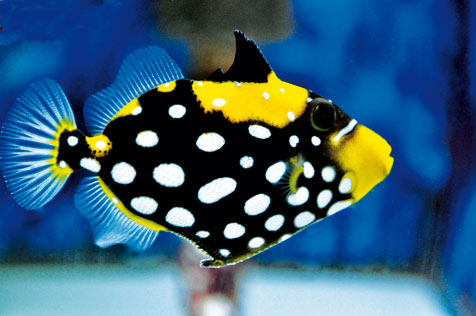
Backbone of the SA business is a wide selection of captive-bred clownfishes. Image: Ret Talbot.
Written by Ret Talbot
On any given day you can find between 135,000 and 165,000 animals—species that are decidedly not indigenous to the American southeast—nestled between Carl’s Home Center and the now-defunct Franklin Super Market on West Old Andrew Johnson Highway in downtown Jefferson City, Tennessee. The vast majority are pomacentrids—clownfishes and some damsels—but there are others.
On this particular day, a hard winter afternoon with stiff angled sunlight drawing sharp shadows across monochromatic brick buildings, I am greeted by colorful swaths of butterflyfishes, blennies, gobies, cardinalfishes, and a host of other exotic, reef-associated, tropical marine fishes. This is certainly not what one would expect in this working class town of just over 8,000 people, with its antebellum Baptist college and a median household income of barely $23,500.
But here it is…
Sustainable Aquatics is the reason coral reef fishes often outnumber people 20,000 to one in Jefferson City. “Most people have no idea what goes on here,” Matthew Carberry, president of Sustainable Aquatics, tells me as we enter the three-story brick building at the heart of the company’s rapidly expanding campus. Carberry grew up in this town, but even many of the kids from his high school class still only know the building as the old Jefferson City headquarters of the Appalachian Electric Cooperative.
So what does go on in this old brick building with a new facade facing the
street? Simply stated, Sustainable Aquatics is a saltwater fish hatchery providing captive-bred and tank-raised aquarium animals to the international marine aquarium trade. This, in and of itself, does not make it unique, although the speed with which the young company has moved to the second spot in the North American marine ornamental hatchery industry certainly has captured the attention of many observers. [Coral Magazine]
